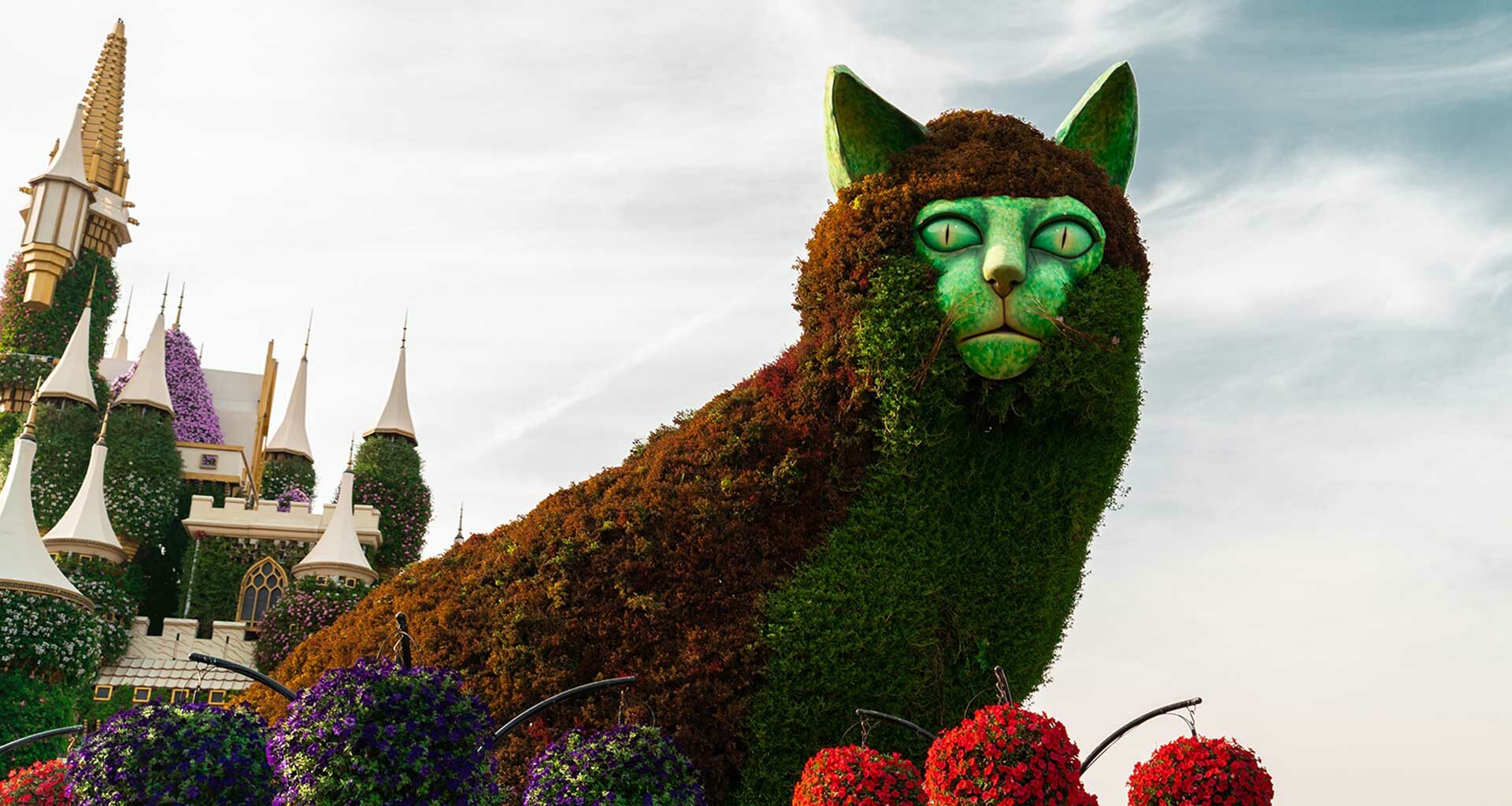In 1998, Joseph Pine and James Gilmore coined the term “The Experience Economy”: the idea that companies—in order to increase the perceived value of their products—design memorable experiences for their consumers. In this chapter of capitalism, experiences are stages, and products are props.
by Alexander Tran
Think Starbucks. Its stores became a theater of baristas, coffee grinders, free Wi-Fi, and relaxed seating, creating a valuable third space between the customer’s home and workplace. Millions were willing to pay a premium for their coffee in exchange for enhanced experience.
In the Experience Economy, our memory becomes part of the goods sold.
Social media would only accelerate the Experience Economy as well as directly influence our approach to experiential design. In 2015, we witnessed the rise of the Made-For-Instagram museum. Refinery’s 29Rooms, credited as the first selfie factory, ignited a spatial design trend that would inspire the Museum of Ice Cream, the Color Factory, and so on and so forth. These event formats all represented a new genre of installations, which seemed to only exist to produce the perfect photo. Minimalism, optimized for Instagram, was being hollowed out by commodification.
In the mainstreaming of these “experiums” (experience + museum, a term regrettably coined by M.O.I.C. founder, Maryellis Bunn), individuals sought out experiences based on their post potential, and blatant narcissism became normalized. Sacrificing tactility and connection, experience was nothing more than a content farm. Thus, Instagram walls became a fixture of every music festival, branded pop-up and fan ’con.
The Experience Economy had devolved into The Image Economy, life essayed by device.
“In the pre-digital photography era, the message was:
This is what I’m seeing. I have seen.
And today, the message is:
I was there. I came, I saw, and I selfied.”
Jia Jia Fei, Digital Strategist
“We are all the editors-in-chief of us-dot-com, the publishers and publicists of our own stories.” Christopher Wallace, Business of Fashion
While these experiums today are viewed as cheugy at best, their design strategy continues to prevail four years later and post-pandemic. Whether conscious or not, experiential marketers and cultural organizers design through the lens of social media, prioritizing personal broadcast over personal awakening. From large scale events to everyday occasions, the principles of human gatherings are organized around a world meant to be perceived by our phone cameras and cleverly edited into viral TikToks.
In essence, thumb-stopping content is the prize over emotionally-moving experience.
“I’m actually happy I grew up before Instagram and all this, because back in New York, we used to have so much fun because no one had a camera out unless it was like, one of those disposable ones. So everyone was actually talking and having fun, dancing… Nobody really has a good time like they used to.”
Paris Hilton, Early Aughts Icon
Within the design community, the selfie museum is illustrative of a dark design pattern, whereby what we build serves only to reinforce toxic patterns of human behavior. In a time of peak disassociation and societal fracture, the stagehands of culture are at a critical fork in the road.
Do we continue to design for instant gratification and perpetual distraction? Or do we course correct; refocusing on facilitating the self-awareness, connection, and growth that’s missing?
Here’s a thought exercise:
Think of several experiences you’ve had recently that stand out as emotionally resonant.
They could include:
→ An intimate dinner with friends
→ An inspiring museum visit
→ A psychedelic trip in nature
What’s at the center of these experiences? The overlap?
Presence is the answer.
For an experience to move you, full mental awareness is required. Design thinker Damian Madray put it best:
“Presence is the emotional base note of all meaningful experiences… When an experience can shift perspective through participation, it can motivate behavioral change. To design meaningful and engaging experiences, we must fundamentally be designing ways to drive our attention to the here and now.”
In a world of rings, dings, and pings, sustained focus is a rare commodity, and thus one’s pure, undivided attention is intrinsically pleasurable. This flow state is what we experience during amazing sex or why brands like Peloton—where concentration is gamified into a communal experience— leave us desiring another go.
INPUT → A NEW PERSPECTIVE & BEHAVIORAL CHANGE → OUTPUT
Emotional Participation &
Presence Loyalty
Seeing vs. Feeling
At the 2022 Whitney Biennial, Chilean artist Alfredo Jaar exhibited a video piece entitled 06.01.2020 18.39, in an immersive installation. Visitors were directed to enter and exit via a green and red light placed outside of the installation, sealing the room and ensuring that visitors experienced it in its entirety. The five-minute video consists of footage gathered from the June 2020 Black Lives Matter protests in Washington D.C. that followed the murder of George Floyd. As a low-flying helicopter hovers overhead at certain points in the footage, wind machines installed in the ceiling of the room are activated, moving in sync with helicopters on screen.
For those that experienced the summer of protests primarily through their social feeds, the installation was more than documentarian work—it was transportative. Through rigorous use of space and sensory elements, viewers were taken into the center of the piece and into the protesting crowd. The length of the video, coupled with the wind machines and the cacophony of noise, created a sense of imminent danger, a writhing crowd, a palpable feeling of rage and frustration. 06.01.2020 18.39 insistently demanded that viewers be emotionally present with the work, using sound, space, and considered design to not just recreate a moment of the past, but to bring it directly into the viewer’s present.
We must now ask, what’s the next chapter of experiential design that can facilitate and deepen emotional presence? How do we unlearn our unconscious biases in order to design for what we need?
What follows is a methodology that will spark a new way of seeing and conceiving experiences, rooted in the human why. These are enduring principles — not short-lived trends — intended to challenge, inspire and ultimately, reset our creative practice and culture-at-large.
The Tenets of Emotional Presence
Unifying Purpose
Explicit Rules
Exclusive Inclusion
The Journey
Generous Authorities
The Altar
Sacred Space
Unfolding Narrative
The Ephemeral Moment
Closing Cues
Unifying Purpose
A unifying purpose is the heart of an event—a deeper why that informs and knits together every creative choice. We must ask ourselves, “why, at the deepest level, are we creating this experience?” When rooted in an actual need, a unifying purpose acts as a magnetic force, pulling in individuals in search of a shared desire be it connection, liberation, expression or enlightenment.
Category Is…
Ballroom culture got its start in New York’s underground in the 1960s, spearheaded by Black and Latinx LGBTQ+ communities. A safe haven and a competitive space for drag, ballroom transformed from elaborate pageantry to “vogue” battles in the 1980s. “Vogue” as a performance took visual inspiration from high fashion and art, adding in exaggerated hand gestures to tell myriad stories in categorized drag genres. Performers would compete for the reputation of their “Houses”—groups that were part competitive affiliation, part chosen family. In essence, vogueing created a sense of identity, belonging, and dignity—a unifying purpose that created a space for validation, acceptance, and self-expression. In the decades since its introduction, it’s moved beyond a niche scene to become a global, multicultural phenomenon, resonating with a cross-section of people who seek out their own liberation.
Explicit Rules
Explicit rules are directions for behavior that enhance, rather than restrict, an experience. While this may feel like an imposition, attendees are appreciate instructions as it helps to orient them towards an event’s purpose. From a playful dress code to a code of conduct, explicit rules enable guests to show up with a shared social context—unleashing connection, experimentation, and meaning.
“In a world that gives us almost indefinite choices, enforcing focus on just one thing is really an act of liberation.”
– Priya Parker
A Ban on Talking
In the dark heart of Shibuya’s seedy district of Maruyama-cho, amongst love hotels & sexual service advice centers, lies an oasis of calm: The Lion Cafe. Built first in 1923 and rebuilt in 1950 after WWII, its hushed interior is a step back in time. The cafe’s seating faces a huge sound system and an expansive collection of vinyl & CDs. Customers sit in silence and enjoy orchestral music, curated monthly, as waitstaff float around, taking orders only in whispers and soft spoken speech. Everything from the music to the decor to the 1920s menu transports guests to another time and place—the perfect antidote to the high stresses of Tokyo life.
Exclusive Inclusion
While our instincts are to embrace inclusivity, an open invitation to an event can actually limit meaningful interactions. Exclusive inclusion empowers us to connect to an event’s unifying purpose and imagine the people who will embody or benefit most from it—prioritizing enthusiasm, safety and commitment. Applying intentionality towards a guest list can push individuals out of their comfort zones in a surprising way that ultimately enhances collective meaning.
An Exclusive Blackout
Jeremy O. Harris’ provocative and record-breaking Broadway hit, Slave Play, is one of the most talked-about pieces of theater in recent years. A three-act performance about race, sex and power, the highly metatextual play asks difficult questions of the oft-affluent, white Broadway theater audience and actively courts controversy. Beyond his work as a writer, Harris is deeply engaged with making the insular and exclusionary theater space more diverse, inclusive and accessible to different types of audiences. Noting the types of conversations that the play’s provocative subject matter was inspiring, Harris instituted a series of ‘Black Out’ performances in which all seats were reserved for Black attendees. The result was a safe and sacred space in which a specific audience could engage authentically with the work.
The Journey
Any meaningful event begins with a memorable journey. From a burner’s drive through Black Rock City to the five hour queue at Berghain, suffering creates the right to have a truly good time. The journey acts as an equalizer and instills a collective sense of commitment upon arrival. Like the turning of a page, the journey transports us physically and mentally, creating a clear delineation from our previous realities.
Desire on the Dancefloor
First opened in 2004, Berghain has become synonymous with Berlin in less than two decades. Enigmatic and alluring, research and strategy is required to secure a spot within its darkened dance floors. Five-hour wait times are common, though sometimes the line doesn’t move at all as guards refuse entry altogether. The exclusivity is a feature: Berghain is a break from the heteronormativity of the outside world, a space of hedonism and abandon. It demands a commitment to liberation if allowed inside; it demands a dedication to the wait, to the all-black dress code, to the strategy of going alone, to learning a handful of German. The wait is the journey; without it, there is no going in.
Generous Authorities
Generous authorities are the activators of purpose within an event. They act as conductors who guide the guest narrative from invite to exit. The doorman, the emcee, the host, the DJ, the bartender—all of these individuals embody and protect an event’s purpose with a spirit of generosity and service.
Cosplay Medics
Fan conventions, from the mainstay San Diego ComicCon to AnimeCon to Disney’s D23, are replete with fans dressed in their best cosplays. Whether decked out in historically-accurate period pieces to detailed armor, cosplayers and their meticulously-made pieces are the subject of competitions, fan photos, and more. Enter the unsung heroes of cons: cosplay medics. Armed with craft supplies that include everything from metallic thread to hot glue guns, cosplay medics sort out cosplay damage and malfunctions, repairing outfits to support guests throughout their convention experience.
Safer Space Monitors
The Club is a cultural archetype, found in every city, from Berghain in Berlin to M.N. Roy in CDMX, each with their own personalities, vibe, and sense of space. Adding to the global canon of The Club is New York’s distinctive spot Nowadays, which operates under strict and community-centric Safer Space policies. Embodied and enforced by a cadre of people, from bartenders to DJs, it’s Nowadays’ safer space monitors that truly transform it from a club to a community. Less a bystander and more a defender of the dancefloor, the role of the safer space monitor is to keep a watchful eye, fostering trust and inclusivity; it’s not uncommon for rule-breaking club-goers to be kicked out for disturbing the comfort and safety of other guests. The monitors thus foster a space of music and community-driven liberation, creating an inclusive club that pulses with thrilling music and accountability.
The Altar
A visual anchor with its own physical gravitas, the altar of an experience is its singular point of heightened focus. From the stage to the runway to DJ booth, it’s the site of reciprocity where guests offer their energy and attention in exchange for exhilaration, escape, and awe.
Telfar’s Palazzo Party
Underneath a painted ceiling filled with frescoes of Roman gods lay a banquet table, 30 feet wide and topped with a riot of fruits, focaccia, and flaming candles. The table was the visual and spatial focal point of Telfar Clemens’ 2020 presentation at Pitti Uomo, a biannual menswear trade show in Florence. Starting first as a raucous dinner, guests enjoyed experimental dishes that brought to mind Gordan Matta-Clark’s Bone Meal and the Rothschild Surrealist Ball, whilst musicians spontaneously burst into song using microphones nestled amongst flora and food and performers danced atop the table during dinner. The following evening, the table became a runway, with models strutting over the dinner’s detritus in a performance that recalled Judy Chicago’s Dinner Party installation, effectively turning the banquet table into a dynamic monument. The result was a vibrant, pulsing altar that facilitated creative exchange between art, artists, musicians, and friends.
Sacred Space
If the altar is where individuals give their energy, sacred space is where it’s returned and replenished. A sacred space can be a hidden lounge tucked into the back of a bar, rooftop escape or sidewalk smoking area—acting as a hidden level where guests can “recover” from the action.
A Rooftop Reprieve
Nestled in a nondescript building in Culver City, the Museum of Jurassic Technology is one of Los Angeles’ most esoteric and sublime museums. Eschewing the typical white, minimalist aesthetic of the galleries nearby, MJT is a dimly-lit, quiet, contemplative space with art pieces in the eyes of needles, superstitions brought to life, and tinny recordings heard through vintage telephones. As you move upward from the winding maze of the museum, you find yourself in a tiled tea room that opens up to a rooftop sanctuary, light wind chimes blowing in the breeze, the cooing of mourning doves—a sundrenched space that moves you away from the wondrous disassociation of the museum and into a breath of fresh air.
Unfolding Narrative
Supporting a feeling of spontaneous discovery, the unfolding narrative of an experience opts to tell the story in flowing, emotional vignettes rather than spoiling it all at once. Through spatial interventions, the storytelling elements build atop of each other, encouraging guests’ perspectives and autonomy to construct their own experience within the experience.
A Love Letter to Haring’s NYC
It was a séance: New Moon brought the vivacious spirit of Keith Haring back to Greenwich Village for a night of revelry and creativity in honor of the launch of the Keith Haring x Pandora collection. Channeling the energy of 80s NYC and and the city’s contemporary renaissance, we built a multi-sensory experience that authentically bridged the realms of art, queer nightlife, and culture, allowing guests to live a day in the life of Haring. Starting with a subway carriage that doubled as a portal, guests moved from the outside world of the street into the inner sanctum of the event, deeper into the universe of Haring and Pandora. The subway transported guests to a built-out art studio, filled with interactive touchpoints and semi-opaque room dividers that added texture and tactility, creating space for guests to explore the vignette at their own pace, constructing their own experience whilst adding to the experiences of others. Meanwhile, dramatic shifts in materiality consciously and subconsciously inspired shifts in behavior, with the concrete floor of the studio slowly bleeding into the black-and-white of the dance floor. This was the final vignette of the journey: an homage to Haring’s favorite club venues in New York with spontaneous performances from break dancers, bucket drummers, and drag queens, encouraging guests to express themselves in whatever way felt best.
A Still-Life Drama
On a street around the corner from Spitalfields Market is the dynamic still-life piece that is Dennis Severs’ House. The eponymous house was created by Dennis Severs over a period of years, not as a reflection of himself, but as an evocation of an imagined family; it’s a time capsule of an 18th-century past with anachronistic elements from centuries that followed. Tours, whether self-led, silent, or guided, begin in the basement kitchen, with an overturned flour bowl with a cracked egg reminding visitors that they’re trespassing into someone’s house. From there, the home beckons visitors to move upward through four stories; flickering candles, a rumbling fireplace, decor and tchotchkes beg to be interpreted, each interpretation autonomous to each guest. Everything is imbued with a sense of dynamism, allowing visitors to build their own dramatic narrative play at their own pace, unencumbered by the presence of actors. What catches your eye informs your narrative; whatever you miss is your own loss.
The Ephemeral Moment
In 1952, street photographer Henri Cartier-Bresson coined the term ‘the decisive moment’, which refers capturing an image that embodies the essence of a moment itself. In live events, the ephemeral moment functions in the same light—expressing spontaneity and storytelling that lends itself to myth-building. It can be captured, but not solely contained by social media.
A Copernican Finale
After the quiet, slightly unassuming show of Coperni’s SS23 collection, the Parisian label stunned its audience with its finale moment, as a demurely-nude Bella Hadid stepped onto a lit platform, shifting as she was sprayed into a dress made only for her. After being covered with a white liquid polymer made by the company Fabrican, the supermodel of our generation emerged fifteen minutes later, wearing a leatheresque sheath dress that hugged her shape. Calling to mind the culture-shifting finale of Alexander McQueen’s Spring 1999 show, wherein two robots painted a revolving Shalom Harlow, Hadid’s finale transformed a typical runway show into an unreplicable performance.
Closing Cue
A closing cue is a gesture that gently, yet definitively signals an event’s conclusion. As gentle as the final pose in a yoga class or as stimulating as the encore performance at a concert, the act bookends an experience without being forceful or abrupt. Closing cues offer individuals a thoughtful send off and end an experience with a feeling of closure as opposed to energetically fizzling out.
The Final Slice
Intimate and exclusive, the infamous Tokyo Record Bar is semi-hidden in a basement in Greenwich Village, seating only three groups per night. The interactive dining experience involves a seven-course tasting menu, served in a little space that recalls the hidden gems in Shibuya’s alleys. As the dinner approaches its end, guests get a cheesy slice of pizza in a takeout box, a juxtapositional reversal of the elegant meal that came before. Hosts graciously inform patrons that they can either stay to eat their slice in place or enjoy it later as an ephemeral memento of their experience. This nudge gives staff enough time to reset the space for the next guests whilst also leaving customers with a distinctively tasty last impression.
Unifying Purpose → Stirs Emotions
Explicit Rules → Enforces Focus
Exclusive Inclusion → Accelerates Alchemy
The Journey → Builds Commitment
Generous Authorities → Co-Create Meaning
The Altar → Receives Energy
Sacred Space → Returns Energy
The Ephemeral Moment → Sparks Awe
Closing Cues → Offers Clarity
CREATIVE TAKEAWAY
Ultimately, what are experiences if not outlets to express our humanity? As experiential designers, we must shift our focus from seeing to feeling and prioritize myth-building over image-making.
Design experiences that command full presence, allowing guests to forgo the digital pacifiers in their pockets.
In conclusion, touch the soul, not the ego.
Download the original report here.
About Alexander
 Alexander Tran is a rare bird in the marketing industry; one of those elusive right and left brained talents that we’re all a little in awe of.
Alexander Tran is a rare bird in the marketing industry; one of those elusive right and left brained talents that we’re all a little in awe of.
Starting his career at creative agency New Moon as an intern, Alexander’s natural affinity for the cultural zeitgeist quickly saw him move into a Junior Creative Strategist role and then move through the ranks to Director of Creative Strategy and then on to become the firm’s first Associate Partner. His lightning fast career trajectory is a testament to how much value he brings to those in his creative orbit. Beyond his work at New Moon, Alexander is deeply committed to championing pay equity for Black and BIPOC creators and creatives, breaking Asian-American stereotypes and spotlighting subcultures through cultural appreciation, not cultural appropriation.
Photo by Nabil Saleh on Unsplash














1 comment